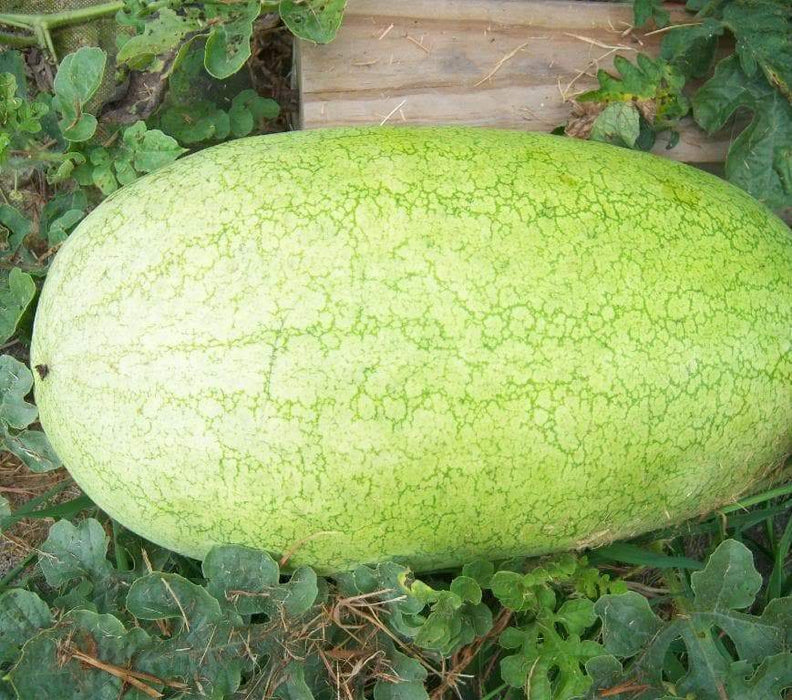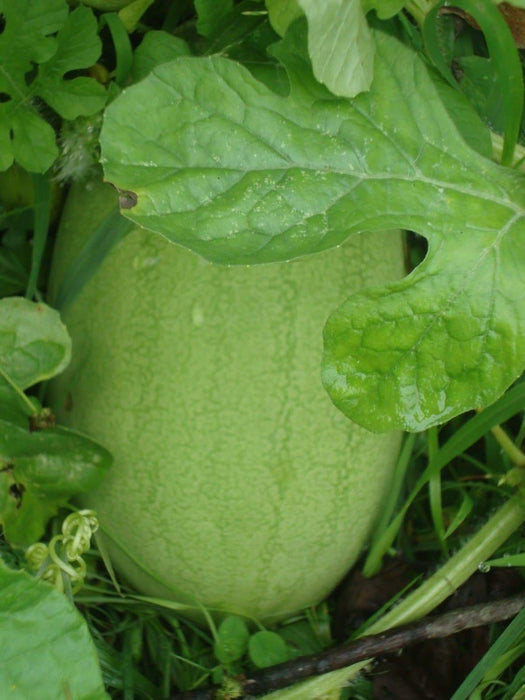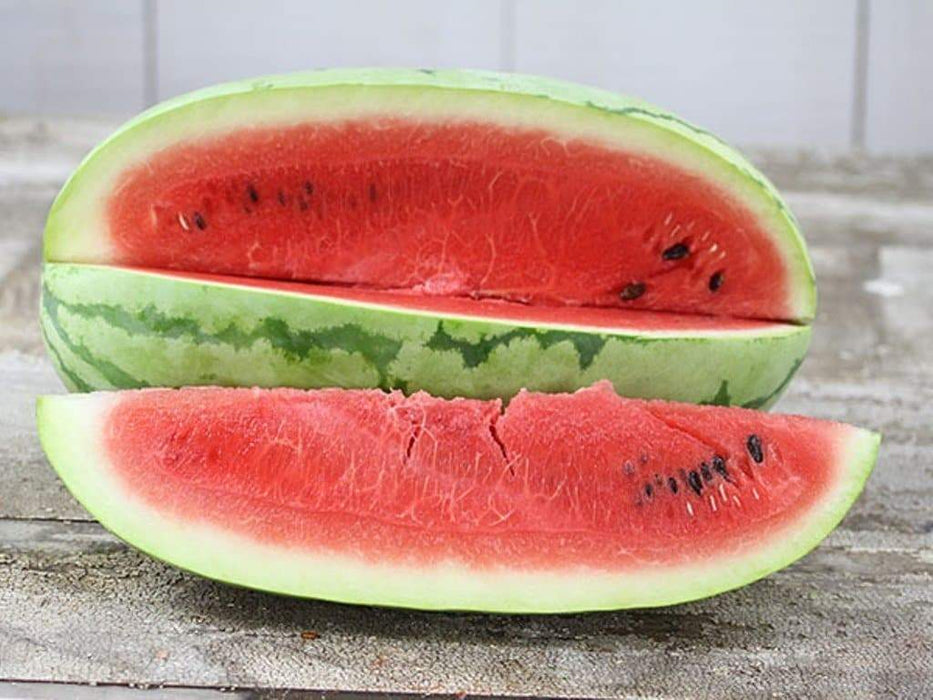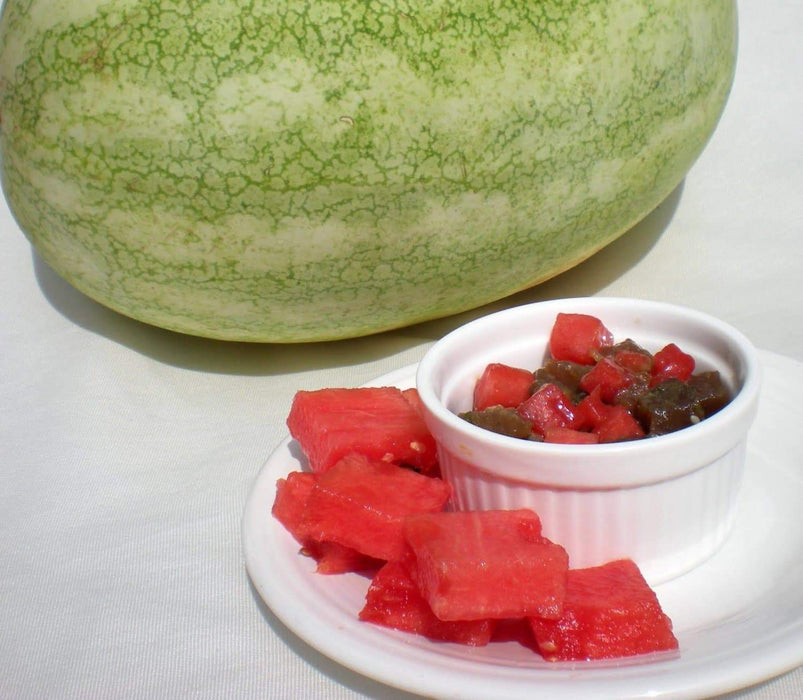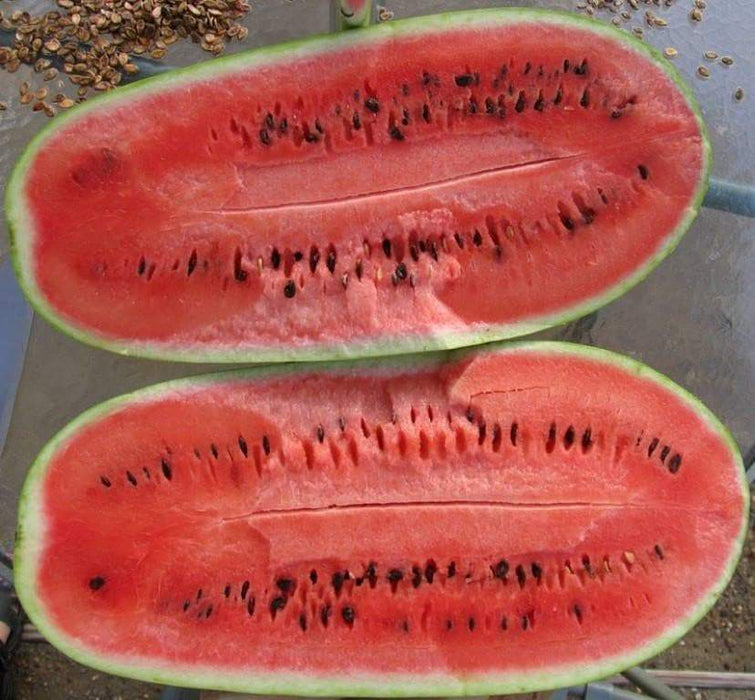
Charleston-Grey, Watermelon Seeds, VINE
Most orders are processed by the next day
Select your desired size and/or color from the available options.
Non-GMO Heirloom Large fruit,30 to 50 lbs !
Latin Name: Citrullus lanatus
Type: Open Pollinated, Heirloom, Warm Season
USDA Zones: 3, 4, 5, 6, 7, 8, 9, 10, 11, 12
Seeds per Ounce: 200
Planting Method: Direct Sow
Sunlight: Full Sun
Height: 12 Inches
Color: Red
Charleston Gray watermelons still make the state of South Carolina proud.
Charleston Gray Watermelon Germination: In cool climates, watermelon seeds should be started indoors, but no sooner than a month before transplanting; plant three seeds per peat pot, 1/4" deep. Provide heat to keep the soil at least 80-85 degrees F. Cut off all but the strongest seedling as soon as true leaves appear, and transplant about a week after frost; put two or three plants in each hill with a 6-8' space in all
directions. Gardeners in warm climates will be able to direct sow watermelons as soon as the soil temperature reaches at least 75 degrees F, planting six seeds per hill with 6-8' of space in all directions. Thin to the strongest two or three plants as soon as the seedlings appear. Watermelons should be planted in full sun and rich, loose soil. Young seedlings may benefit from black plastic to warm up the soil.
Growing Charleston Gray Watermelon Seeds: As soon as the vines begin to develop, apply a thick layer of mulch to control weeds and protect the melons from soil contact. Keep the soil moist until the fruit begins to grow, then water only if the soil dries out completely. Watch out for insect pests, which can be a problem. Charleston Grey is resistant to anthracnose and fusarium wilt.
Harvesting Charleston Gray Watermelon: Gardeners use many different methods of testing whether their watermelons are ripe, but knowing the approximate mature size of the melon helps to determine when it is nearing ripeness. One test is to knock on the watermelon with your knuckles, listening for a dull thump rather than a hollow ring. Another method is to check the underside of the melon where it rests on the ground; the skin should be a rich yellow. Also, the curling tendril closest to the stem of the melon often indicates ripeness when it begins to turn brown. Watermelons usually keep for several weeks in a cool place.
Saving Charleston Gray Watermelon Seeds: Watermelons will cross with other varieties of watermelon, so isolation may be necessary to ensure genetic purity. When the melon is ripe, the seeds will be mature. Cut open the melon and remove the seeds; wash them to remove the sticky residue. Spread them out to dry for a week, then store them in a cool place for up to four years.
Detailed Charleston Gray Watermelon Info: Citrullus lanatus. Annual. 85 days. 200 seeds per oz. 6-12" height. 5-6' spacing. Produces 25-35 lb. oblong, pale gray green watermelons with crimson flesh.
Materials: garden,planting,melon,seeds,vegetable,vine,fruit,sweet,Watermelon seeds,Watermelon,Charleston Grey
LET OUR CUSTOMER SPEAK FOR US
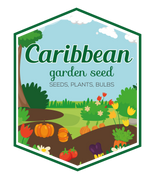
![[Seeds] - Caribbeangardenseed](http://caribbeangardenseed.com/cdn/shop/files/gift-card-gift-card-1_1024x1024_dfa857db-9150-4315-a362-7f0bb3fb9c47_60x28.png?v=1703978838)
